9 Tips to Get the Most out of Your Real Estate Questionnaire
To maximize the chances of matching your potential buyers with their dream property, you need to ensure that you understand what they want.
The idea is simple: Instead of wasting time guessing what your client fancies and unsuccessfully presenting them with half a dozen properties, you can target them with just three options that meet at least 70% of their criteria. This way, you accelerate the buying process and avoid irritating your customers.
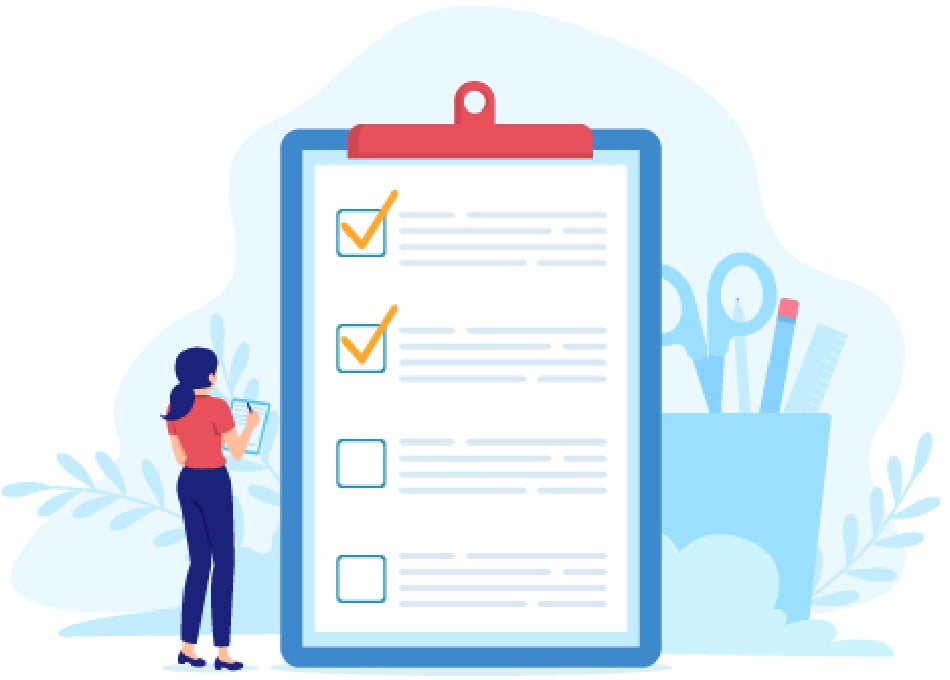
So how can you achieve this? By designing a buyer lead sheet that helps you unpack information about your client’s preferences and intentions.
Let’s explore a few tips that help you create an effective real estate questionnaire to convert appointments.
1. Start by Pointing Out the Benefit of Filling In the Questionnaire
The purpose of a questionnaire may be nothing new to your potential buyer, but it’s a chance to connect with them in a friendly way and earn their trust.
For this reason, it’s a good idea to start by briefly explaining why you need the information. Don’t make it complicated. State upfront that the questions will help you:
- Understand how your client’s desired property should look like
- Shorten the time you will provide them with great options
- Offer them an overall property buying experience
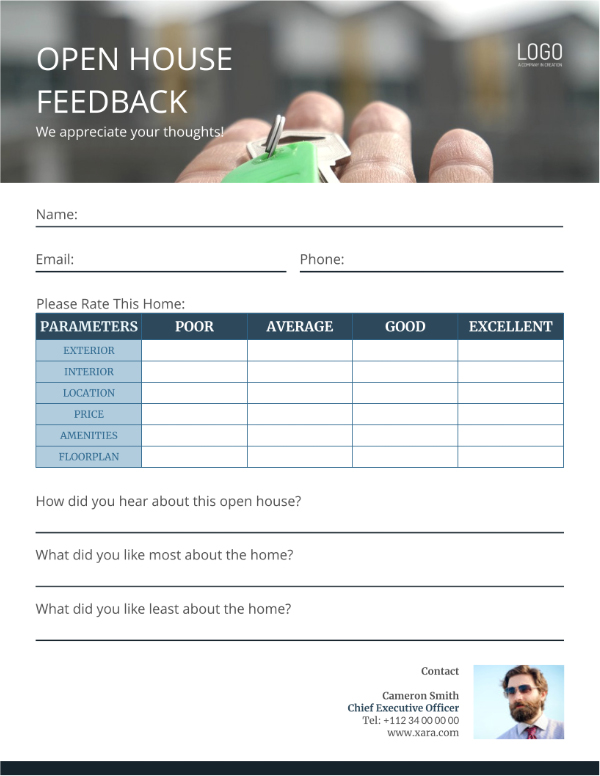
Made by Xara Cloud
2. Get Them Starting With Speaking About Their Motivation for Buying
Purchasing a property is more than just buying a physical asset. It is also about the intention behind it. Here are some questions that can help you get a better picture of what you should start searching for:
- Are you planning to live in this house or rent it?
- Will you use it as a main residence, or is it a vacation house?
- Will the property need to be guest and party-friendly or a cozy place for your family?
- Are you thinking of moving in immediately?
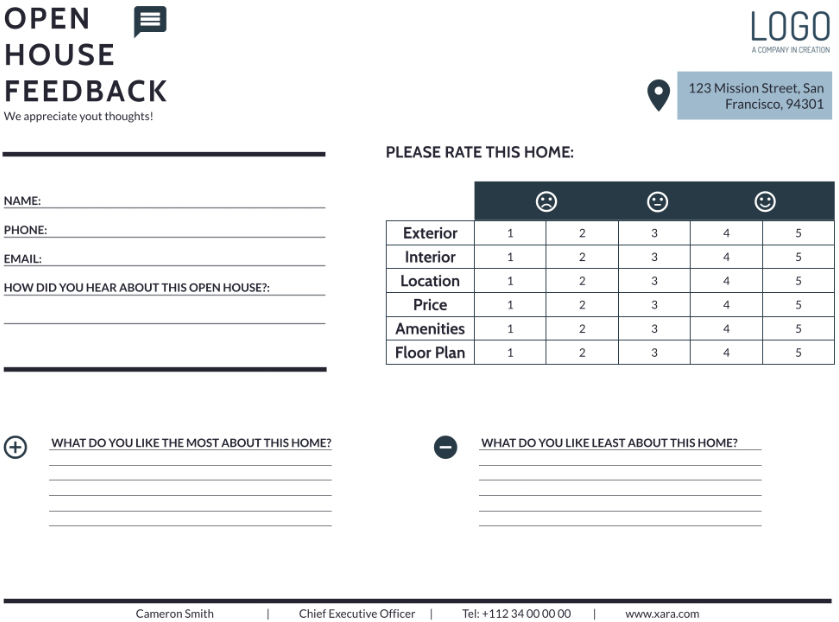
Made by Xara Cloud
3. Decide What Your Main Categories of Questions Are
This tip is quite critical. Grouping your questions into topic clusters for easy skimming benefits, not just your client, but you as well. When you have the essential information organized, you will work more efficiently. Some topic examples are:
- Contact information
- Buying motivation
- Key features of the desired property
- Financial details
- Experience working with other real estate agents
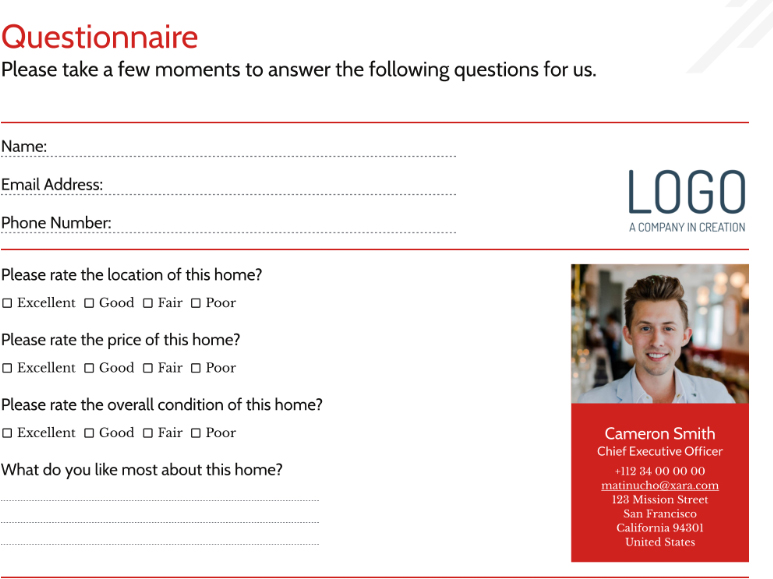
Made by Xara Cloud
4. Make the Questionnaire Easy to Understand
A rule of thumb for designing a great real estate buyer questionnaire form is to use words that your average buyer understands. Be mindful not to use too much industry-specific jargon. Such terms may confuse the prospective buyer and defeat the purpose of your questionnaire.
When you do your best to eliminate possible sources of confusion in your form, you set a clear direction for yourself in you.
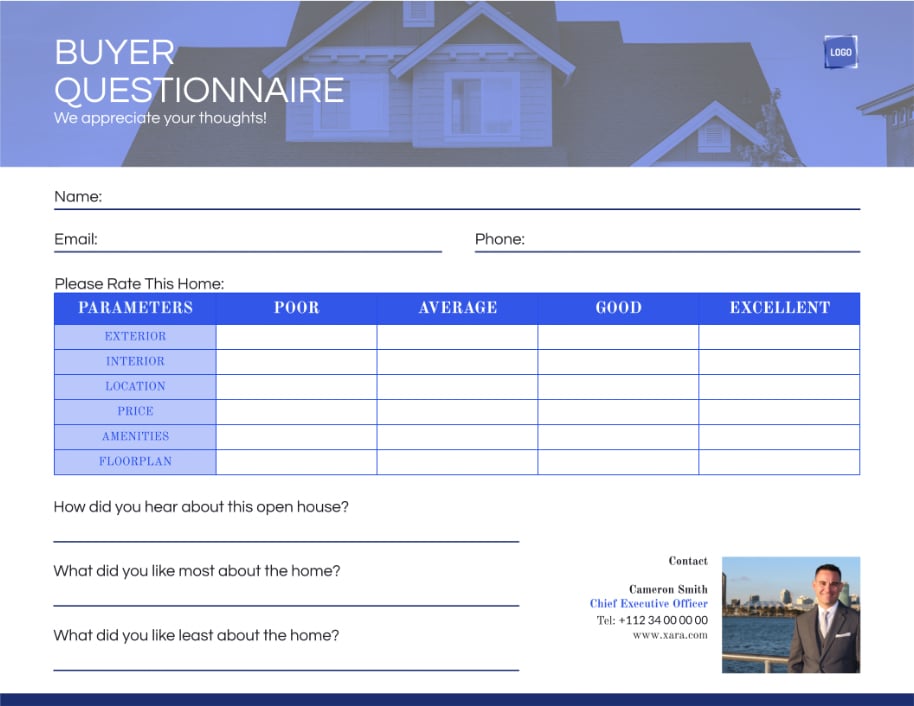
Made by Xara Cloud
5. Use Closed-Ended Questions as Much as Possible
These types of questions help you pinpoint what your client wants and ensure they don’t diverge from what they have in mind. Conversely, open-ended questions can lead to vague answers that confuse you and your potential buyer, both.
Ask them: ‘How many square feet do you want the living room to have?’ instead of ‘How do you imagine your living space to look like?’
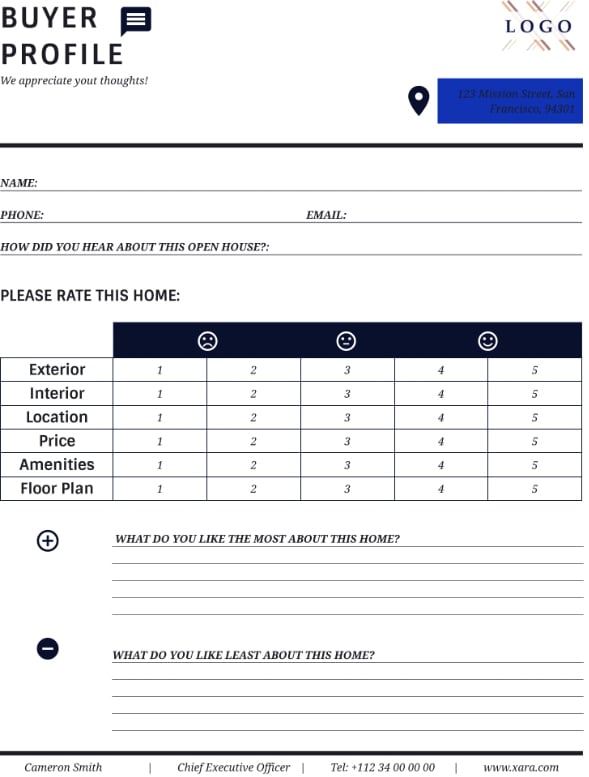
Made by Xara Cloud
6. Give Your Client the Chance to Express Further Preferences
While it’s a great idea to guide your potential buyer’s way through the questionnaire by asking relevant questions, make sure to include a section where they can add other important details.
You can provide your client with a structured buyer lead sheet, but you can’t foresee a particular feature your client wants their new house to have. For example, one customer may be keen on an en-suite bathroom, while another might want an attic relaxation room.
So, make sure to make space in your form open-ended for these kinds of requests.
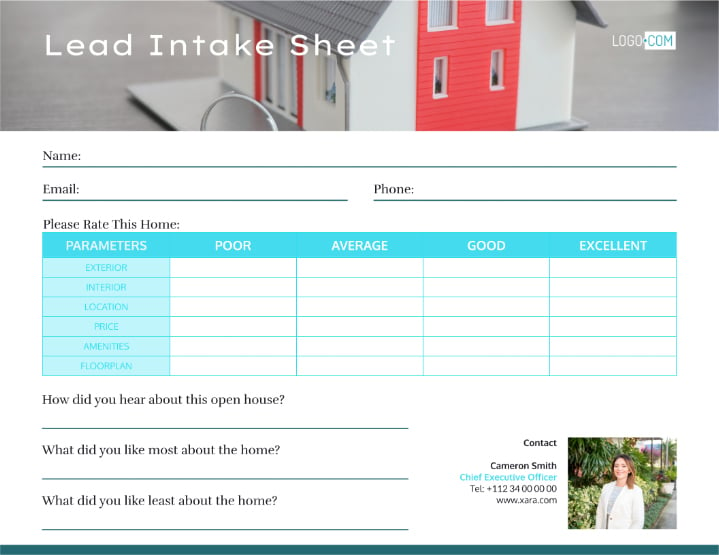
Made by Xara Cloud
7. Keep Your Form On Point
There is a balance you need to strike in your form: including critical questions yet ensuring that the client doesn’t get overwhelmed with details.
The optimal length of your real estate questionnaire would be one page. If you consider it necessary, depending on the case, you can go up to two. However, the more information you ask your client, the more they will experience decision fatigue which hurts the home buying experience
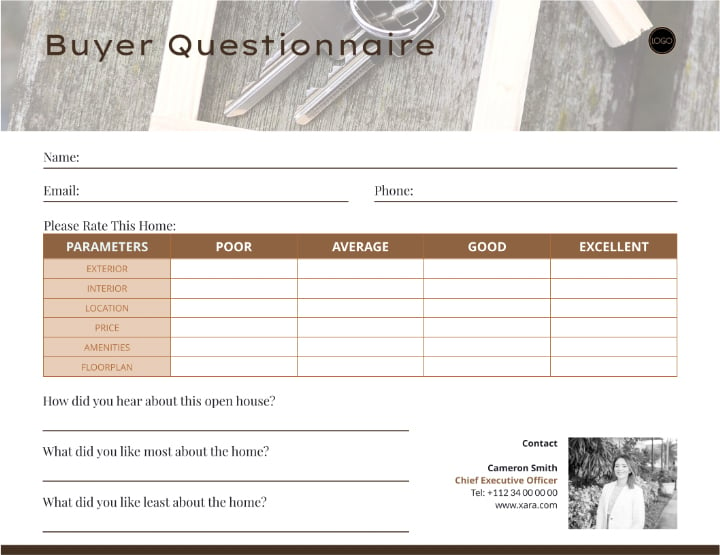
Made by Xara Cloud
8. Reassure Them That the Information Is Confidential
Speaking about their buying intentions can be very personal to your clients. That’s why you should make sure to reassure them that you will treat the information with confidentiality.
Showing that you understand your client’s concerns on all levels will help you deepen the trust they have in your service.
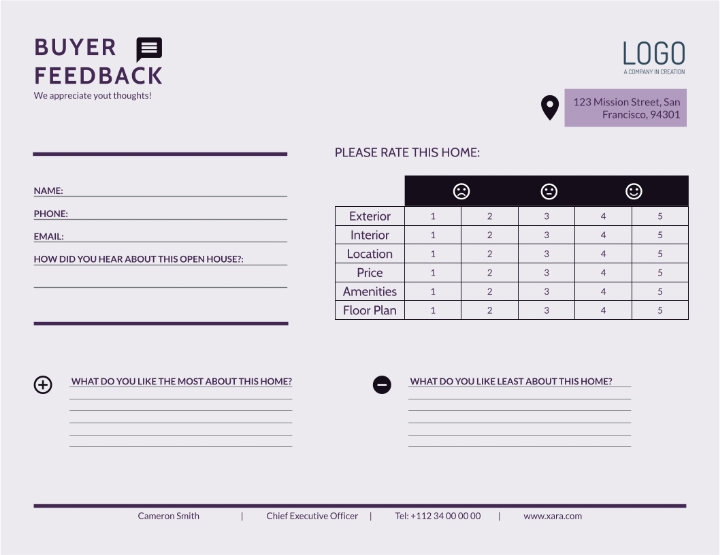
Made by Xara Cloud
9. Ask Them About Their Preferred Channel and Frequency of Communication
This section serves to tell your client when they can expect to hear from you. And that you won’t get in touch more than needed.
Also, be mindful of what your clients’ communication channel is. For example, some of them may prefer you to reach out via email, while others via phone call. No matter what the option of their choice is, respect it.
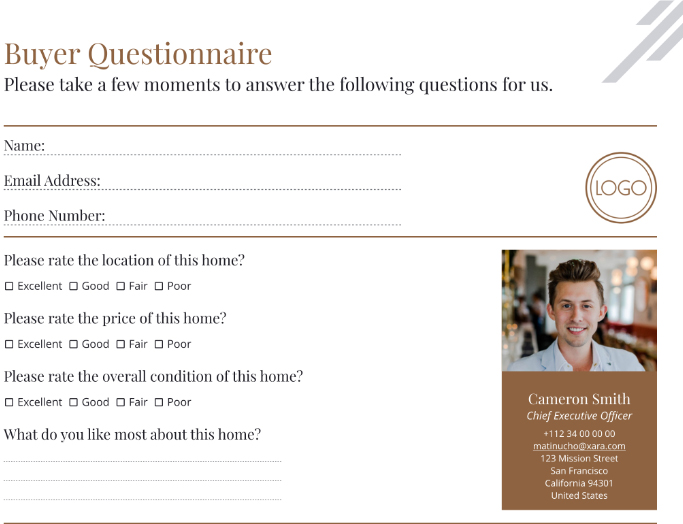
Made by Xara Cloud

Try Xara Cloud for 14 days and discover
the results
- No credit card or phone number required.
- Start creating instantly — 1 minute signup.